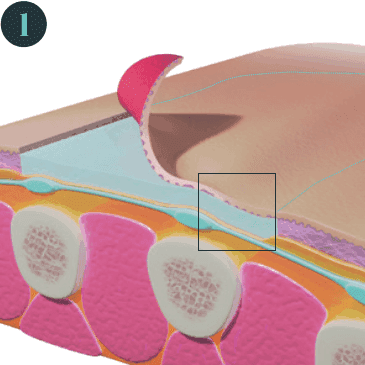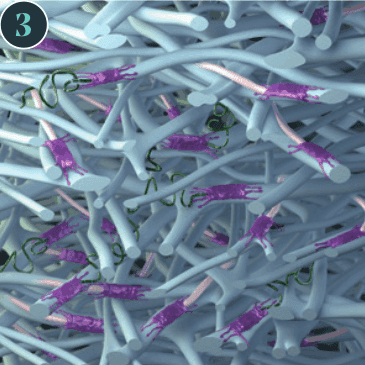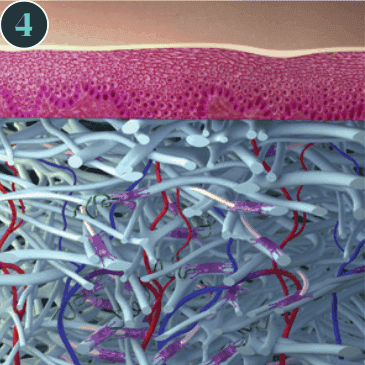Decision Tree
Clinical Application
Learn in this video how to reconstruct the Extensive and Widespread Paget’s Disease of the Breast (Cancer) with MatriDerm® in a Two-Step Procedure
Learn in this video the single steps of a One-Step Procedure from wound bed preparation till grafting the wound with STSG.
Learn in this video the single steps of a One-Step Procedure from wound bed preparation til grafting the wound with STSG.
Learn in this video the single steps of a One-Step Procedure from wound bed preparation till grafting the wound with STSG.
Bibliography
There are more than 170 publications on the efficacy of MatriDerm®. The bibliography gives an overview of the abstracts of the most important publications on MatriDerm®.
Mode of Action Watch video

In a One- or Multi-Step Procedure, MatriDerm ® Dermal Matrix is placed on the wound bed and covered with a secondary dressing of choice (e.g. split-thickness skin graft).

MatriDerm® Dermal Matrix provides a native three-dimensional collagen elastin matrix to facilitate cell migration and guided healing.

Fibroblasts are guided by the native collagen elastin scaffold ensuring structured healing and formation of a neo-dermis.

Enhanced neo-angiogenesis and formation of microvessels ensuring supply and optimal split-thickness skin graft take.

